Gill Haynes discovers four faces of Iceland aboard the boutique Seabourn Ovation
Iceland inverts traveller expectations. Usually, if you see steam billowing on a horizon, you think pollution or worse. But in Iceland, it’s much more likely to mean geothermal activity: exploding geysers, bubbling mud pools and freaky, Martian landscapes. Drop anchor in a tiny fishing community and you might think there’d not be much there – but you can hike well-marked paths to waterfalls and wilderness and learn about a natural disaster from just three years ago, sensitively told. And whilst we had packed for downpours, chills and fog, even though it was July, we actually enjoyed sunnier weather than back in the rainy UK.
Best value for money
Another thing we hadn’t quite expected was just how expensive Iceland can be – fish and chips for two and a small beer each came to £60 in Reykjavik – which was one reason we’d chosen to sail around the island with Seabourn. As a virtually all-inclusive luxury line that we had sailed with before (shore excursions are about the only thing not included), we knew we could bank on excellent quality accommodation, dining and facilities which would guarantee us an experience on board that, whilst not cheap, would have been even more eye-wateringly expensive ashore in Iceland. And we could look forward to meeting fellow Seabourn guests who would be interesting, well-travelled and fun to be with (they were – a great mix of Brits, Americans, South Africans and more).
Sizing up Seabourn Ovation
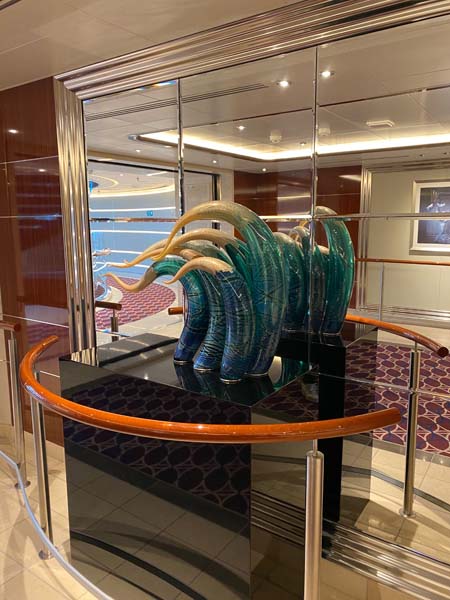
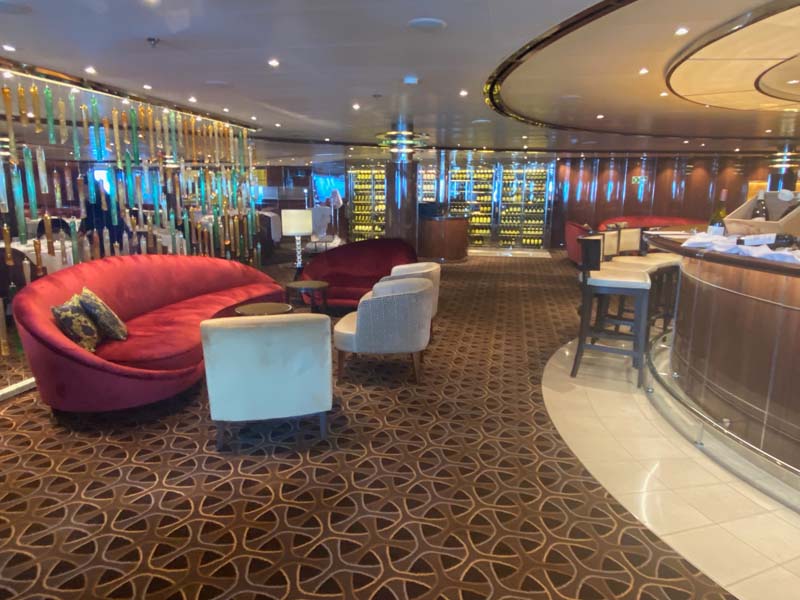
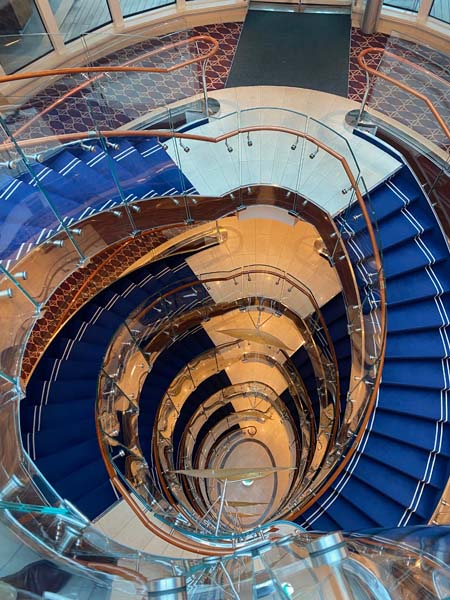
We boarded Seabourn Ovation in Reykjavik for our week on board, finishing in Copenhagen. And were instantly impressed – the embarkation process has been so streamlined that we were being shown to our stateroom in less than five minutes by well-schooled staff who greeted us with a friendly ‘Hello’ throughout the cruise. Seabourn Ovation is still a small ship though slightly larger than the sister ships we’d sailed on before, carrying 600 passengers rather than the 450 we’d been used to. But the ship’s layout is so similar that it’s just as easy to find your way around and everything still felt as uncrowded, unrushed and uncomplicated on board as before.
Even more dining choices
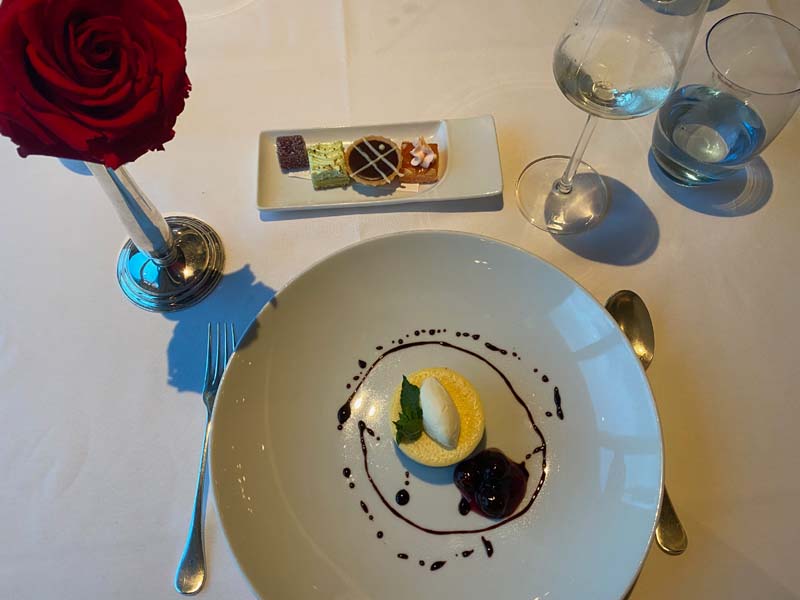
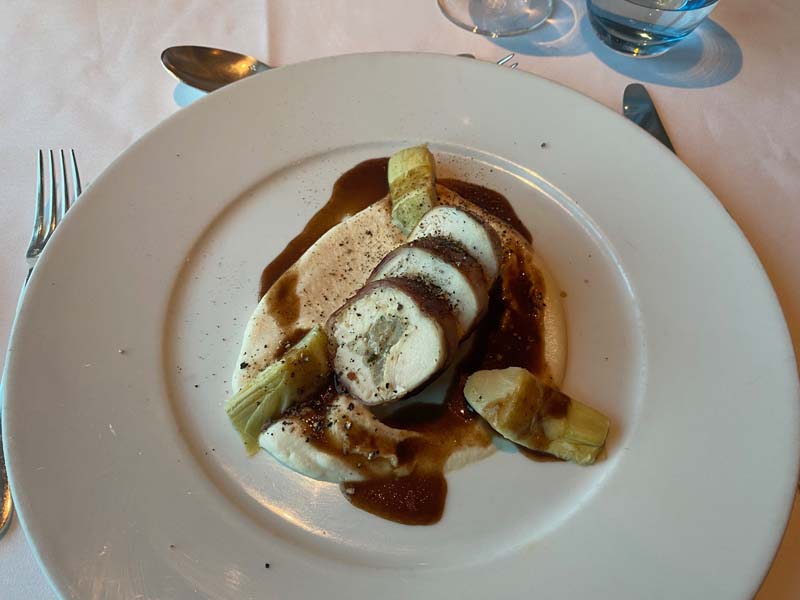
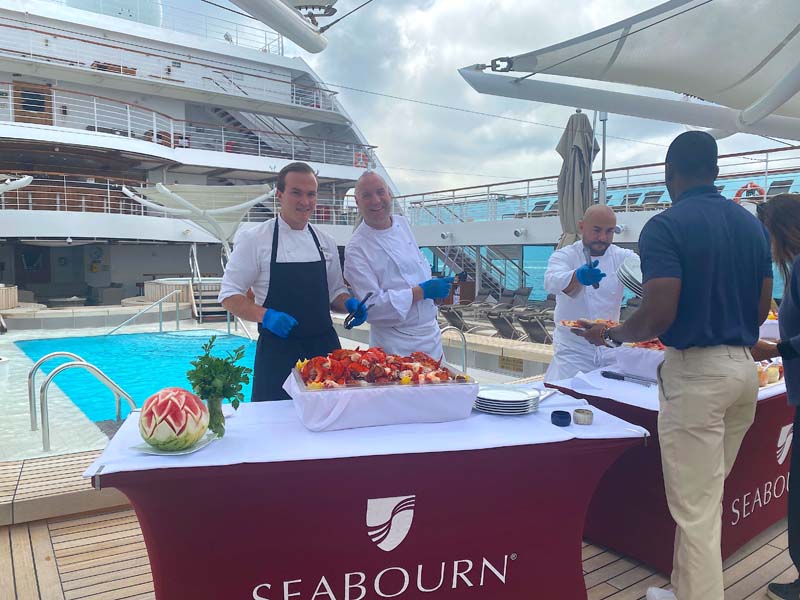
The extra tonnage does, however, mean that there is room for an outstanding Sushi restaurant, with Japanese chefs and waiting staff who’ll happily explain the finer points of the extensive menu. Open for lunch and dinner on a first-come, first served basis, it was about the only place we ever saw queues on board – it really is that good.
The other stand-out dining option is The Grill by Michelin-starred chef Thomas Keller. All guests have one opportunity a week to book dinner here and it’s well worth the wait with lavish entrees including Lobster Thermidor, Saddle of Lamb and Rib-eye steaks. On other nights, we ate well in the main restaurant or in the Colonnade on the upper deck with its indoor/outdoor dining by day and themed menus each evening. A nice touch was to find the printed dinner menu for each venue in your room as you turned in each night so you could plan the next evening’s culinary adventures over breakfast. Most nights were ‘elegant casual’ with smart jeans being very acceptable and even the formal ones only required the chaps to don a jacket, making for a nicely-dressed, relaxed and friendly atmosphere.
Suite Dreams
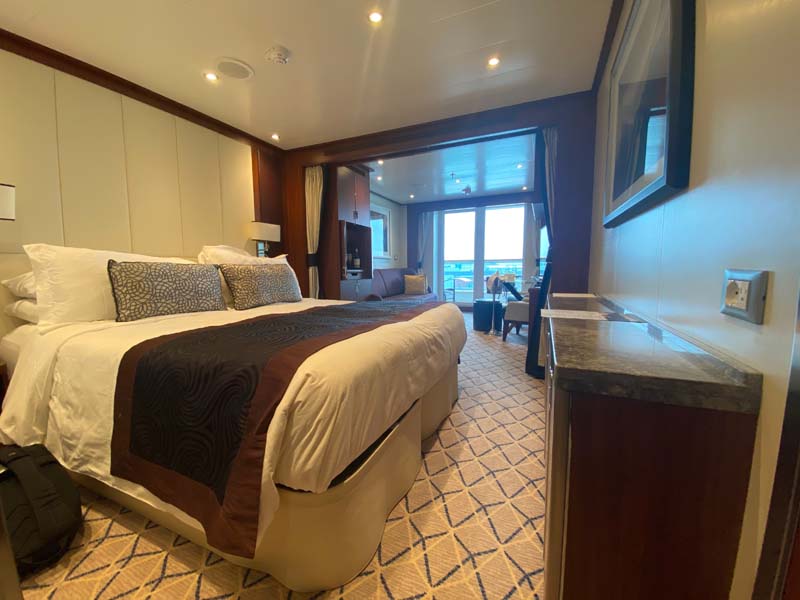
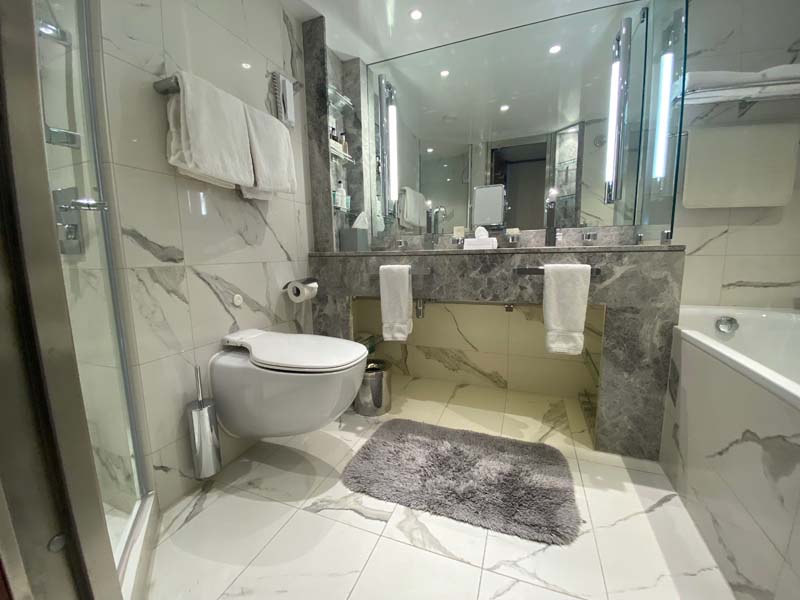
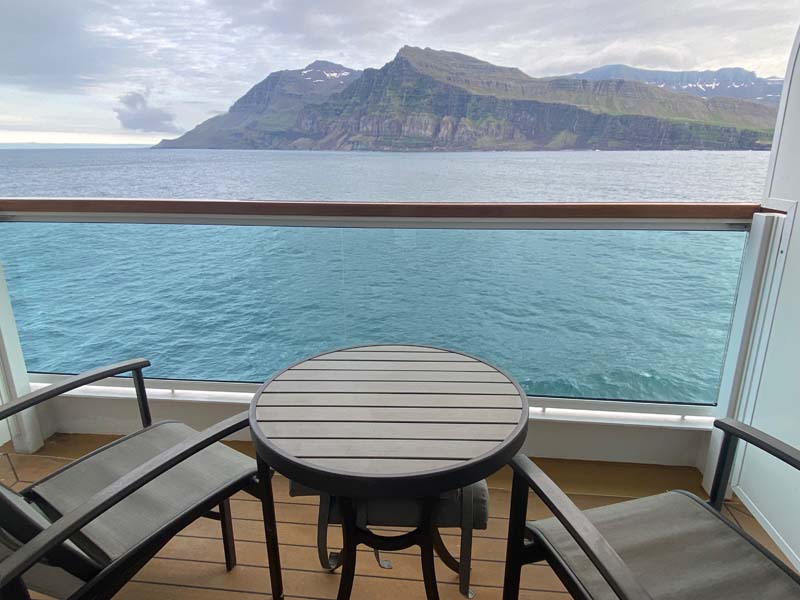
Our room was an absolute haven. With a sitting and eating area, wonderfully comfortable beds and a spacious bathroom, it had everything we needed from the bottle of champagne awaiting our arrival to the safe, mini-bar/fridge, hair dryer and Moulton Brown toiletries. The dimmable lights were a nice touch, as was the low-level lighting to the bathroom at night that was triggered by your feet swinging off the bed.
Iceland’s scenic surprises
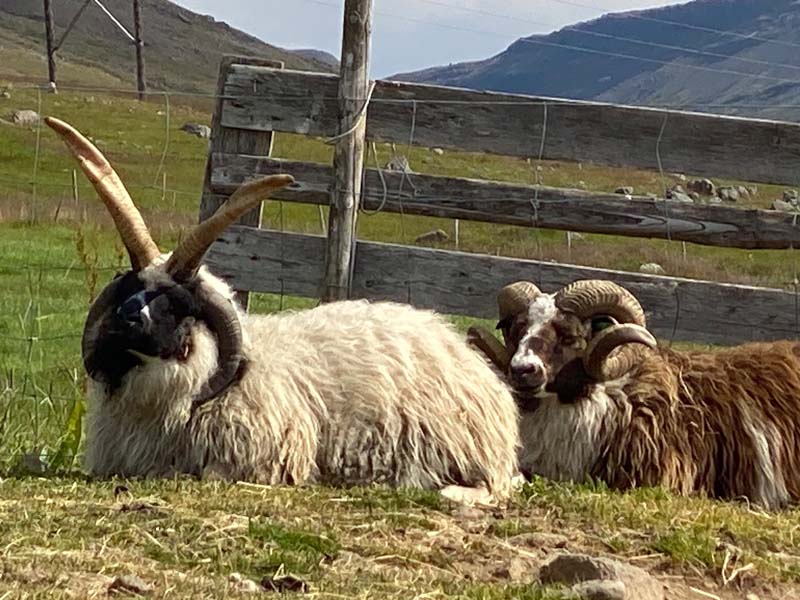
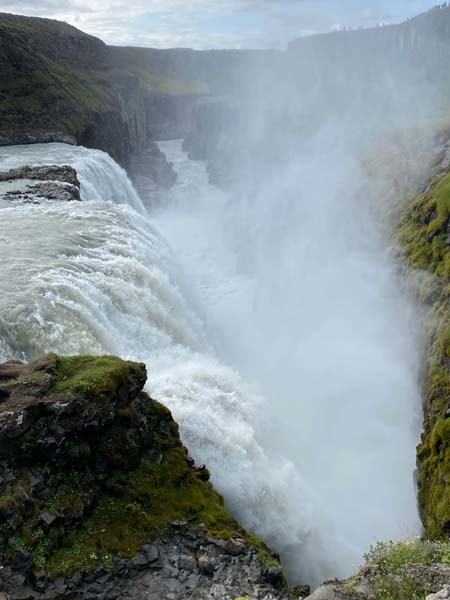
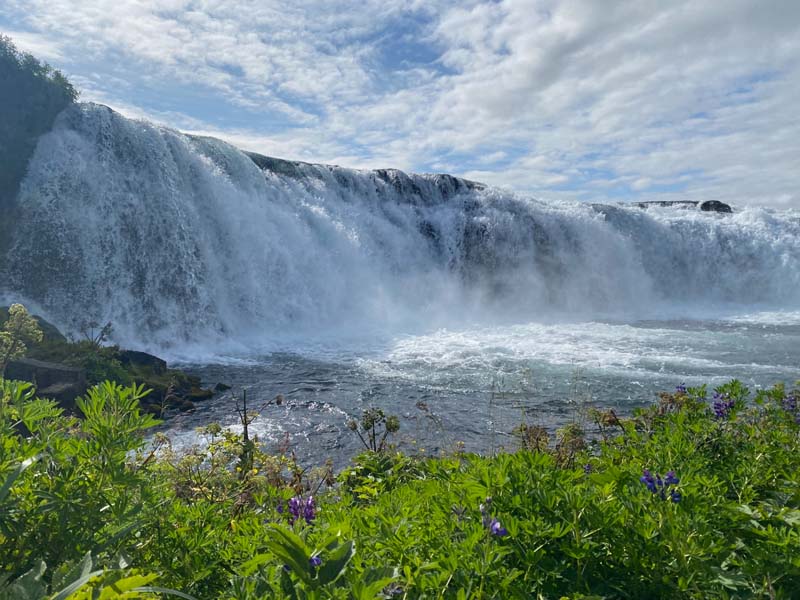
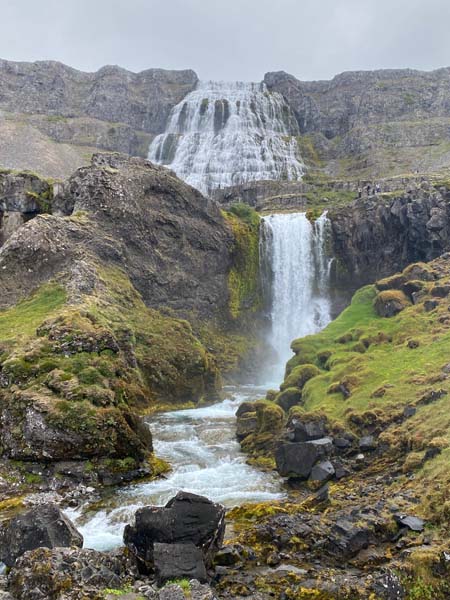
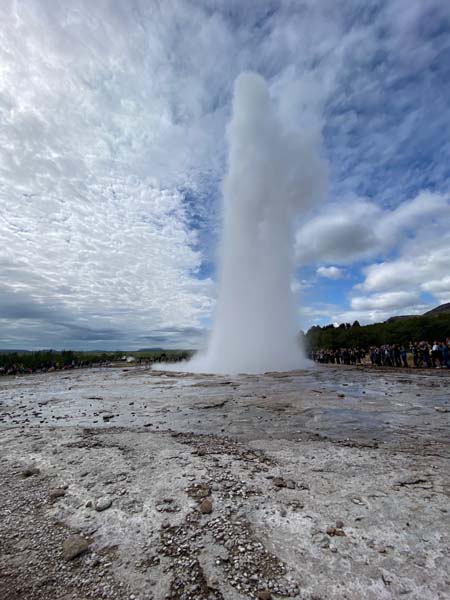
And we had a lovely balcony view from which to enjoy the changing shoreline as we sailed clockwise around Iceland from its capital to its rugged fjordland, its geothermal north and then the remoter east coast. In Reykjavik, we’d taken a Golden Circle day tour that had primed us on some of the island’s scenic surprises, from the Strokkur Geyser, erupting 30 metres into the air with startling ferocity to Gullfoss waterfall which plummeted into a chasm as clouds of mist hung like spectres in the air.
In Isafjordur, on the peninsula that sits like a quotation mark on Iceland’s north-west, we added Dynjandi to our growing list of favourite waterfalls – this one sprawled wide then broke into long-drop cascades. Walking the half hour up to the viewpoint made for a good stretch of the legs in air so clear and sharp it seemed to spring-clean our lungs. At a nearby sheep station, the farmer’s wife served us tea and ‘good marriage cake’ (good baking = lasting partnerships, especially in an Icelandic winter) as we were transfixed by the fjord view – and the unusual sight of a four-horned ram.
Stranger Things
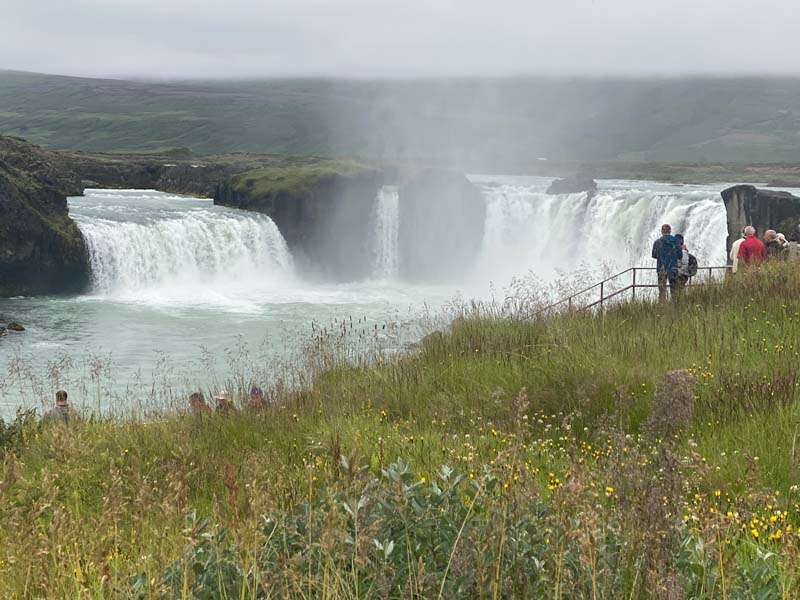
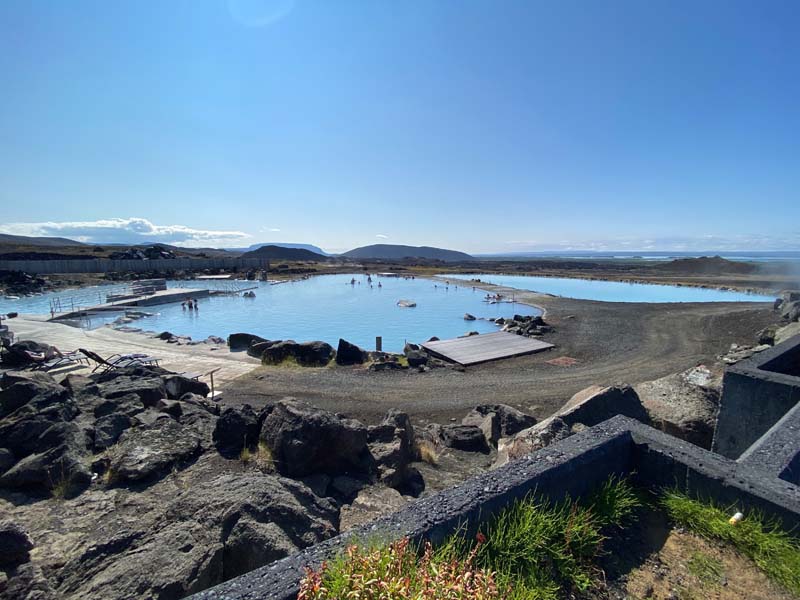
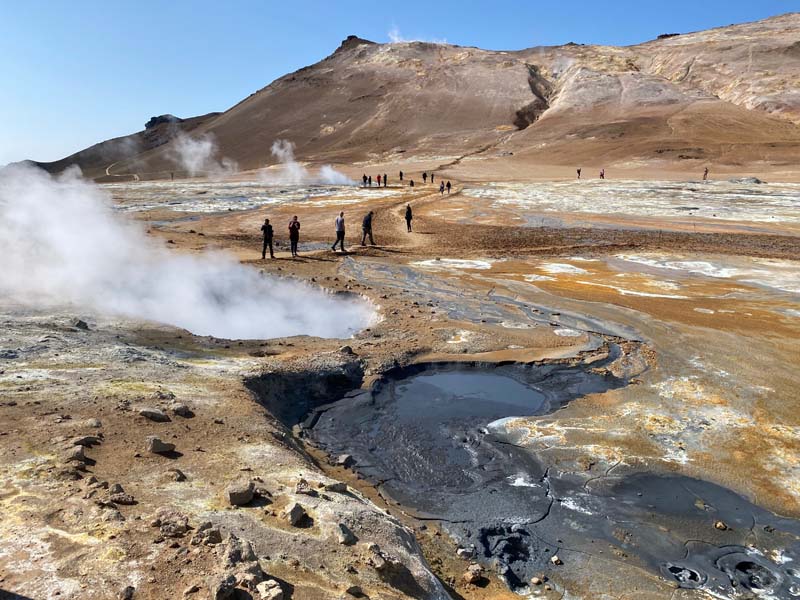
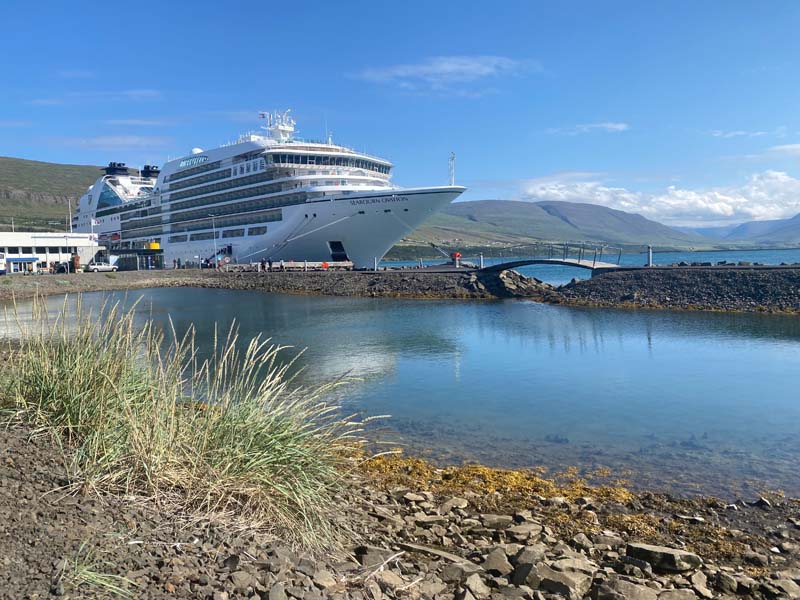
Akureyri to the north had more surprises in store for us. On our excursion, the rolling green slopes that led to photo-tastic Godafoss, ‘The Waterfall of the Gods’, suddenly burned away into a scalded landscape of raw earth, red rock, molten mud pools and the sulphurous smell of the earth’s innards. It looked like a film set and has indeed featured in Game of Thrones. The whole Lake Myvatn area is a geothermal wonderland, with weird pseudocrater islands, fields of lava pillars, a rocky cleft where the American and Eurasian tectonic plates are ripping apart, hot spring lagoons with health-enhancing mineral-rich waters and the Viti (’Hell’) volcano all nearby.
Wild, wonderful but wilful nature
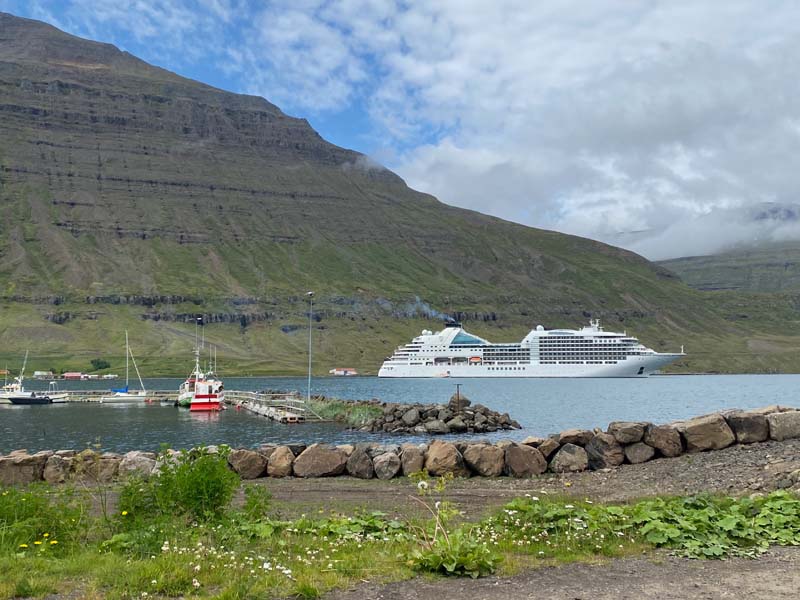
It was impressive stuff. But our most remote call, Seysidfjordur on the east coast was theplace that really struck home for me. The quayside tourist office was manned by a high cheek-boned, shock-haired local who couldn’t have looked more Icelandic if he’d worn a Viking helmet. And he was helpfully giving out maps of the way-marked hiking trails above this picturesque fishing town, where wild lupins thronged, curlews called and arctic skua chicks tried out their flying skills. But as well as beautiful waterfalls and wildlife, this port had another story to tell, as set out in touching detail in a series of outdoor displays near where we came ashore. Because in December 2020, record rainfall triggered landslides that engulfed part of the town, crushing homes, historic buildings and even the waterfront museum. Amazingly, no-one was injured, but the displays reveal the trauma and devastation visited upon this small community, which pulled together to begin its recovery.
Like the geysers and boiling mud pools, it was a reminder of the power of nature, and in Iceland, you feel that power is never far away, even as we enjoyed that glorious summer sunshine.
Find out more
Our Silver Travel Advisors can advise and book marvellous Seabourn cruises around the world. Give them a call on 0800 412 5678.











